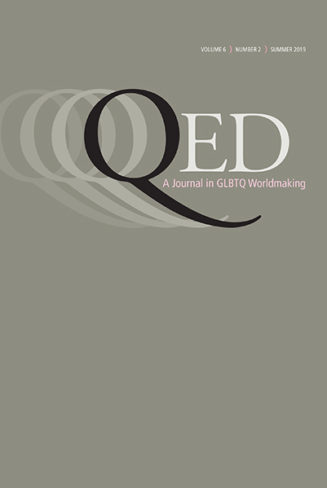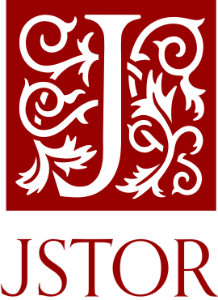Re-examining Communication and Media Practices in/across Queer Asia
(PDF Download)
This is an open call to academics, educators, activists, public intellectuals, artists, policy and culture makers, and communication and media practitioners.
We have been witnessing ongoing academic concerns about Queer Asia in various academic disciplines (Luther & Ung Loh, 2019; Martin, Jackson, McLelland, & Yue, 2008; Spigel, Berry, Martin, & Yue, 2003), but these investigations have not received sufficient attention in the field of GLBTQ studies rooted in the Western academic tradition. Put simply, the academic discussions of Queer Asia are still underdeveloped. Research on Queer Asia lacks representation even though we increasingly witness the vibrancy of queer scenes in the region thanks to changing political situations, the rapid distribution of newer communication technology, and the increasing transnational exchanges in and across the region. Based on academic and non-academic concerns in queer issues that are geographically and culturally diverse, this special issue seeks to decolonize the Western-centric traditions of academic knowledge productions and initiate more conversations about Queer Asian issues.
Here, it is important to maintain that thinking about, examining, and conceptualizing Queer Asia is a rather challenging task. For example, Asia exhibits mixed modalities in many sectors: contradicting values such as 1) premodernity, modernity, and postmodernity; 2) Confucianism, Christianity, Buddhism, Muslim, and other indigenous beliefs; 3) monarchy, theocracy, communism, democracy, and other governmental systems; and 4) developed economies, middle-income economies, and developing economies. Indeed, Asia is an imagined region that reinforces the white, Western cartography of the globe. Asia encompasses cultures and nation-states that are vastly dissimilar and competitive in terms of political systems, religions, economic structures, societal norms, and cultural traditions. Hence, it is nearly impossible to uniformly apply established theories to this region and to formulate a theory or method that can explain Queer Asia. We better look into what is happening and enrich historically saturated and culturally specific queer practices, and thereby the discussion surrounding Queer Asia is not muffled by Western-dominated theorizings of queerness.
To engage in this special issue, we demonstrate Queer Asia as a theory/method. By this means, Queer Asia is a critical cultural theory and method that not only problematizes Asia as a region but also refashions Asia as an alternative lens for studying localized queer issues and concerns of sexual and gender minoritarians (e.g., Chiang & Wong, 2017; Yue, 2017). More specifically, Queer Asia troubles the ways in which the manifestations, representations, and performances of localized sexual and gender minoritarians reify and resist global, transnational flows of Western queer formations, including GLBTQ human rights. At the same time, Queer Asia reconsiders how intra/inter-regional cultural (dis)connectivities play into locally nuanced productions of sexual and gender minoritarian cultures. Queer Asia is about centralizing queerness to unsettle the ordinary cartography of Asia as a region in order to speak back to the Western-centric theorizing and paradigms of queerness (Luther & Ung Loh, 2019). Hence, Queer Asia, which recognizes multiple convergences and divergences of queerness in and across Asia, is not an area study. It is about rewriting, remaking, and revising queer practices of Asia(nness) as a multiple, unfinalized, and dynamic conception that decolonizes the whiteness/Westernness of queer modernities as the global, transitional normativity.
Overall, this special issue aims to examine how historical particularities, contemporary sociopolitical events, and transregional connectivity create Queer Asian communicative cultures and productions in the proposed spaces in order to complicate Western-oriented queer studies. By revisiting and traveling around the multiple localities of Queer Asianness working with communication and media practices, we hope to maintain a futuristic space where scholars continue to discuss Queer Asia and contribute to building up Queer Asian studies further.
Contributors may submit an academic essay (6,000-7,000 including references) or a forum discussion (1,000-3,000 words) that responds to the following question for this issue: What’s happening in/across Queer Asia as a space, not geographically limited? We want to answer this question with a focus on communication and media practices in/across Asia. By communication and/or media practices, we mean ongoing processes and activities in which media technology, social institutions, and/or relational settings alter, shape, and reinforce situated meanings. We seek 250-500 word proposals that pay attention to underrepresented issues and concerns of cultures, groups, and traditions overlooked by the name of Queer Asia. Especially, we welcome essays from scholars, educators, activists, artists, policy and culture makers, and communication and media practitioners that disrupt and reshape existing cisgender/nontrans-centric queer Asia(s).
When you submit a proposal, please indicate the contribution type: academic essay or forum discussion.
Timeline:
250-500 word proposals due: February 28, 2022
Requests for full manuscripts: April 15, 2022
Full manuscripts due: August 15, 2022
Expected Publication: One of the 2023 issues
Please submit proposals to Jungmin Kwon (jungmin.kwon@pdx.edu) and Shinsuke Eguchi (seguchi@unm.edu). Please feel safe and free to inquire with questions or concerns before deadlines.
Queer Generosity: Approaching Something Like Queer Love in Always Precarious Times
(PDF download)
This is an open call to academics and non-academics.
In any act of worldmaking, tensions between what is best for a community and best for individuals within that community form axes around which debate, contention, struggle, compromise are all but inevitable. Particularly in queer worldbuilding, with our commitment to radical self-determination, we worry over what is good for the individual queer while also keeping an eye on what is good for the larger queer community and its cultural and political projects.
Too often, such tensions have degraded into skirmishes over strategy that cast complex issues as oversimplified binaries (e.g., assimilate or opt out) and that do not generatively forward creative possibilities for queer worldmaking. Instead, we see such tensions not just as opportunities for misunderstandings and conflict, but also as the possibility to offer and receive gifts — gifts of experience, insight, embodied struggle, and queer wisdom — that collectively constitute queer worldbuilding. Such possibilities often arise out of robust conversation amongst queers working, thinking, and feeling their way across multiple and intersecting lines of not just sexuality and gender but also race, ethnicity, class, and ability. As such, we advocate for queer generosity, a conceptual, theoretical, and strategic approach that we hope this special issue will help develop.
Generosity is historically embedded within economies of exchange and gift giving. In the ancient Greek tradition, Aristotle (NE) insists that for gifts to be virtuous, they must be given freely and with the right intentions. However, sometimes rhetors (un)intentionally offer terrible gifts, those that Jennifer Clary-Lemon describes as “gifts we do not want to receive” (n.p.). As with all gifts articulated within economies of exchange, there rests a presumption of reception, response, and an acknowledgment of the relationships that emerge. These presumptions, further, are shaped by race, class, gender, age, ability, geography, and sexuality.
However, while always influenced by the uneven power dynamics of the categories above, generosity need not be imagined within economies of exchange. While contributions may certainly go beyond the boundaries of this call, we highlight three areas where queer, feminist, anti-racist, anti-ableist, and thinkers engaged in class critique might be able to extend generosity beyond the logics of exchange: embodiment, affect, and epistemology.
Embodiment: As feminist philosopher Rosalyn Diprose suggests, generosity “is an openness to others that not only precedes and establishes communal relations but constitutes the self as open to others” (p. 4). Diprose’s notion of corporeal generosity is not caught up in the logics of exchange but in the construction of the self that is necessary to move us toward social justice. Nelson Rodriquez suggests that trans generosity “opens up the possibility of framing queer embodiments more generally as forms of ‘bodily generosity’ that can potentially become a resource for students in terms of imagining their own bodies and identities as sites of ‘endless becoming’” (p. 270). The bodily generosity envisioned by Rodriguez opens questions of bodies moving through time and space. Bodies move and act through spacetime which suggests ways of movement and being together in ecologies of human and non-human agents. We note Rodriguez’s connection between the ontology of bodily generosity and the open space for considering generosity as transformative experiences, experiences that are fraught with asymmetrical power dynamics.
Affect: Similarly, performance studies scholar Jill Dolan’s notion of queer critical generosity encourages ways of giving back to artists in ways that “draw out [a piece of art’s] borders, boundaries, and beauty as evocatively” as possible (Dolan, n.p.). Dolan links the powerful experiences we have in the theater with the drive to use that affective response beyond the fleeting moments during a show. The generous critic is one who both describes those feelings and offers ways to carry them forward beyond the moments of our viewing. Dolan states that “critical generosity is a necessary gesture in how we see the relationship of performance (and the arts in general) to the project of world building, as it allows us to think specifically beyond the present of reception into the near future of potential activism and engagement” (n.p.). What is important to recognize here in Dolan’s notion of critical generosity is that the transformative effects of experience lead to material action beyond the present.
Epistemology: Generosity may also be understood as an epistemology, a way of knowing and responding to others. For example, though not framed as such, Eve Sedgwick’s “reparative reading” can be understood as a gesture of generosity free from the logics of exchange. Such a reading imagines space and places for queer survival where none may exist. In the reparative reading, the critic approaches another not to offer her a gift but to treat what the other offers us with a kindness of spirit that resists doing harm.
Finally, in times of crisis, critical orientations toward violence make generosity seem like a weak political stance. However, as Isaac West notes, “[m]ore generous modes of queer critique are not naïve nor do they excuse those moments where norms and normativities are reinforced more than they are challenged” (p. 541) Rather, generous critiques can create new forms of life that help us imagine creative reasons to go on living.
***
Whether structured within the logics of exchange, embodiment, affect, or epistemology, the indeterminacy of reception, response, and acknowledgment demanded by generosity reveals tensions between the radical right for self-determination and communities of practice that this special issue seeks to engage. These tensions leave us with several questions that we hope this special issue will address:
- What queer tensions exist between communities of practice and the right to self-determination? And how might such tensions be approached generously?
- What technologies for the transmission of generosity are available for rhetors and how might our audiences respond to those technologies?
- What criteria are necessary for determining who should receive generosity, and how?
- How might queer generosity shape our conceptions of politics and the political?
The contributions in this special issue may come at these questions obliquely. We are specifically seeking contributions from scholars, teachers, and activists from historically oppressed groups and/or contributions that attend to the intellectual contributions from these groups.
Contributors may submit original academic research or relevant non-academic research (7,000-9,000 words). We welcome traditional, queered, and queering forms for this special issue. We also seek shorter pieces for a forum discussion (4,000-5,000 words) that responds to the following question:
What are queer and trans politicians, scholars, and artists doing to advance queer generosity?
Think, for example, of the Silence = Death campaign as a collective struggle rhetorically linking speech with life and working against the cruel negligence of the Reagan administration. This is a politics of visibility built on the increasing call to “come out” (cf. Harvey Milk, Jean O’Leary’s Day of Visibility). Contrarily, Sylvia Rivera’s “Y’all Better Quiet Down” was an individual critique against the liberal gaystream political activism of the time. “YBQD” disrupted the collective’s forward movement toward an exclusionary gay rights agenda. Forum contributors will articulate a living individual or collective that illustrates what queer or trans* people are doing currently to help us think more fully about queer generosity.
In your proposal, please indicate the contribution type: academic research, non-academic research, or forum contribution.
Timeline:
250-500 word proposals due: December 1, 2020
Requests for full manuscripts: December 18, 2021
Full manuscripts due: June 1, 2021
Publication: Winter/Spring 2022 vol. 9, no. 1
Please submit proposals to Timothy Oleksiak (Timothy.Oleksiak@umb.edu) and Jonathan Alexander (jfalexan@uci.edu). Please feel safe and free to inquire with questions or concerns before deadlines.



